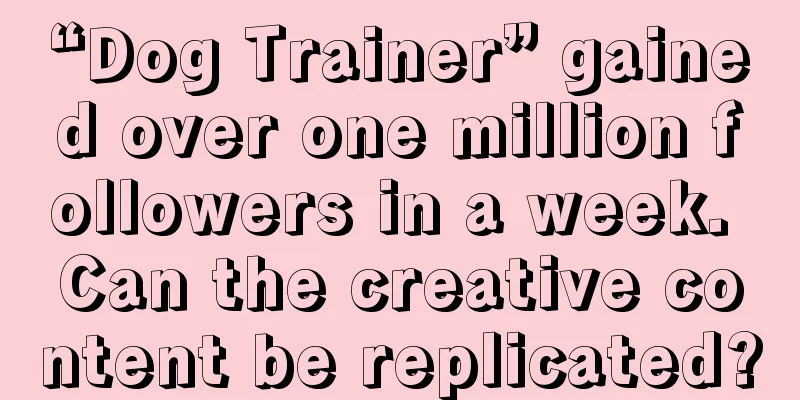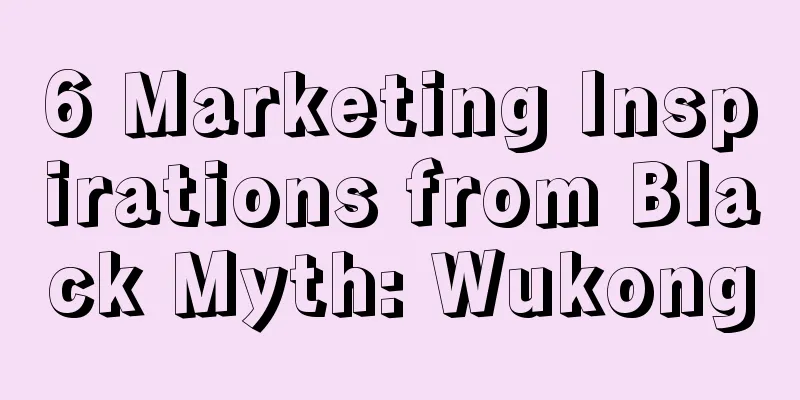“Scenario stimulation” is triggering a new round of food brand growth

When workers sitting in front of computers want to "extend their lives", coffee will pop up in most of their minds; when fans sitting in front of the screen are feeling the passion of the game, a can of beer will seem timely; when mentioning "happy water", Coca-Cola will be the protagonist in the user's mind. On Xiaohongshu, a glutinous rice dumpling with a "good luck buff" has become a favorite of young people; on Weibo, "the first cup of milk tea in autumn" has become a hot search year after year, and it is also a popular topic that arises from the "scene"... Obviously, scenarios have become a necessary path for brand marketing to connect with consumers. Especially for food and beverage brands that are most closely linked to users' lives, scenarios are not only the carrier of product functional attributes, but also the emotional field for brand and consumer communication, value delivery, and trust building. Food and beverage consumers are showing "scenario-based" characteristics, and their demands are gradually changing from category stimulation to "scenario stimulation". In particular, in Morketing's view, even if consumers often encounter and use a product in their lives, if the brand does not give users a sense of "scenario awareness" through scene reminders, it is difficult for them to associate it with what they really need. When the brand and the scene are associated, users will draw the relationship between the product, service and themselves in their minds, and brand loyalty will increase accordingly, and it will not be easily replaced. When "whoever controls the scene controls the world" becomes a consensus, how should food and beverage companies make good use of scenes and carry out scene marketing? Morketing believes that there are actually two paths: first, go with the flow in conventional scenarios, and second, innovate scenarios. Under these two paths, for brands, mobilizing user emotions and breaking away from the original circle will be the key to success in scenario marketing. 1. Go with the flow in regular scenarios and arouse user emotions.First, let’s define “regular scenarios”. In fact, traditional festivals such as the Spring Festival, Mid-Autumn Festival, and Lantern Festival, well-known solar terms such as the Spring Equinox and Winter Solstice, sports events such as the Olympics and the World Cup, or “the first cup of milk tea in autumn”, etc. To some extent, regular scenarios can be understood as a kind of “consensus”, that is, at these times, users already have a certain cognitive basis for some topics or behaviors, and at the same time, they are also marketing nodes that brands cannot miss. For example, the 24 solar terms and Chinese food culture are actually natural "pairings" of scene food. When it comes to the beginning of spring, eating spring pancakes is one of the customs. When it comes to Qingming, you always have to eat a bite of Qingtuan. When it comes to the winter solstice, eating dumplings is also a traditional custom in the north... For brands, based on users' general understanding and consensus of the scene, they can just go with the flow. The key to standing out is to mobilize and satisfy users' emotions. In fact, regarding "scene", Liang Ning, a product strategy expert, divides it into two parts in "30 Lectures on Product Thinking". "Scene" is time + space, and "scene" is situation and interaction. When users stay in a space, there is a situation and users interact, which is a scene. In Morketing's view, the goal of "generating interaction" is actually to mobilize user emotions. For example, when it comes to winter, most users think of "eating a steaming hot pot". Last winter, Haidilao created a series of topics and marketing activities around the "Minor Snow" solar term, becoming the protagonist of winter. In winter, for most users, "eating a steaming hot pot" is the greatest common divisor of their emotional needs. Therefore, on the day of the light snow, through the topic #Light snow is suitable for eating hot pot#, Haidilao not only achieved synchronization with the needs and desires of users, but also mobilized and established the user perception of "Light snow = hot pot". For this reason, in the topic interaction of Haidilao, many netizens shouted on the same day: "It's light snow today, let's go for hot pot", "There is nothing more healing than hot pot in winter", "Light snow means eating hot pot with friends". In addition, in order to better meet the public's satisfaction from a hotpot meal, Haidilao created an emotional topic #Goodbye to all worries when the hotpot is started#. Overall, the introduction of solar terms as a topic, and then the use of brand and emotion as topics to meet users' functional needs for products and emotional needs for the "hot pot" scene, may seem like a one-day marketing campaign, but in fact it is Haidilao's long-term preparation for the "hot pot in winter" scene. Through the interaction and creation of the brand, users, and KOLs in this scene, Xiaoxue, Niuyou, Want to Eat, Winter, etc., have all become hot words. To some extent, the consumption scenarios of food and beverages are evolving from functional and purposeful needs to emotional and experiential needs. The new generation of young consumers are facing high pressure in the workplace and life, and they are trying to heal themselves in various ways. Food and beverages are the perfect match for emotional expression. When brands grasp the scenarios and meet the functional needs and emotional value of users at the same time, scenario marketing can naturally achieve twice the result with half the effort. In fact, for food and beverage brands, becoming a "topic" not only captures users' emotions, but is also one of the best ways to cold-start new products. At present, new product marketing can almost be considered as "wherever there is discussion, there is attention", and its success or failure often depends on the breadth and depth of discussion. In terms of breadth, it can be understood as the range of people reached and covered, which is a problem of exposure; while depth is a problem of "discussion degree". Some hot topics and trends on platforms including Weibo and Xiaohongshu can be inspiration for product innovation, and are also key positions for breaking the circle and "being discussed". Miaozhen Marketing Academy once proposed the following view based on years of research data: "The interactive share of social media is the key engine for business growth." Obviously, in the era of social media, interaction and discussion are the key engines of brand business growth. New product marketing should follow this trend and further transform the potential energy of topic discussions into product potential. 2. Innovative scenarios stimulate demand associations, breaking out of the original circle is the keyScenes are triggers and also connectors. On the one hand, scenarios can trigger and awaken demand. A drinker may drink liquor, beer, red wine, fruit wine and many other types of alcohol in different scenarios. The scenario is the decisive factor. As for the connector, "scenarios" are responsible for connecting two types of content: one is to connect people and goods, so that the product becomes the "standard configuration" in the minds of users in a certain scenario; the other is to connect different people, and ultimately make the needs of different people reach the greatest common denominator. If the focus of going with the flow in conventional scenarios is to connect people and goods, then scenario innovation focuses more on connecting different people. As for how to achieve the greatest common divisor, creating demand through scenarios, and having brands break out of the original crowd circle is the key. After all, for brands, achieving coverage of new crowd circles means finding new business growth points. Sinopharm Tai Chi’s “breaking the circle” in the past two years is a typical case. When it comes to the product Tai Chi Huoxiang Zhengqi Oral Liquid, which belongs to the category of medicine and health, the common scenarios in which it may appear include illness, heatstroke, etc. How to "break the circle"? New products + scene innovation. In May last year, Sinopharm Taiji and Bright Food Group jointly launched the "Huoxiang Xiaobingkan", which was launched in pharmacies across the country. Positioned as a "tribute to high-temperature heroes", it is aimed at the majority of workers working under high temperatures and can be obtained for free at designated pharmacies in various provinces and cities across the country. This way of appearance is also considered "unique" in the ice cream industry. At the same time, it also made an official announcement on Weibo, and this topic product immediately sparked heated discussions among netizens. "Does it taste like alcohol? Can I drive after taking it? Does it feel like it melts in my mouth and my throat gets hot, like Huoxiang Zhengqi Liquid?" "If this had been developed a few years earlier, wouldn't any good kid have to drink Huoxiang Zhengqi Liquid during military training? Wouldn't it be better to just eat some ice cream?" "I got it. It's pretty good. The milk and a little patchouli flavor bring back the flavor of childhood." … In this product launch, Sinopharm Taiji not only took off the "pharmaceutical" hat through the method of co-branding, but also transformed itself into "ice cream" and "snacks", making a group of high-temperature workers its own "KOL", and also entered the crowd circle of the Guangming brand by joining hands with the leading ice cream brand Guangming, achieving a breakthrough in category and crowd. Perhaps having tasted the sweetness of the "Huoxiang Flavored Ice Cream", in May this year, Sinopharm Taiji cooperated with Tianfu Cola to launch a new product, Huoxiang Flavored Cola, once again combining the scene of "high temperature" and "summer escape" with its own new product, and refurbished it into "summer life-saving partner", "a cool summer, a drink to relieve heat", etc., expanding into daily life scenes such as camping and outdoor activities. #How intoxicating is the patchouli-flavored ice cream# and #Who can resist getting intoxicated by adding patchouli to cola# have been hot topics on Weibo for two consecutive years, attracting widespread attention and discussion. In addition, taking advantage of the opportunity to go viral, Sinopharm Taiji also began to promote its flagship product, Huoxiang Zhengqi Liquid, in advertisements. "Always have Taiji Huoxiang Zhengqi Liquid at home", "Always have it when traveling without alcohol", creating the topic #Take Huoxiang to travel#. Through joint ventures and product innovation, more people are made aware of the daily use of their products and then use the opportunity to break out of the circle, making hot pot dining, summer heat prevention, home living, travel, etc. all become consumption scenarios for Tai Chi Huoxiang to cover more people. The core task of marketing is to understand, discover or "create" some unmet needs of users. The first step of innovation is cognitive innovation. Only by finding innovative cognition can we find a way to achieve sustainable growth. 3. ConclusionMagic Mirror Insight pointed out in the "White Paper on New Consumption Potential in the Second Quarter of 2024" that the high-growth population in the food and beverage market is mainly concentrated in two aspects: functional demand consumption and emotional value consumption. Among them, in addition to taste and efficacy, the key focus of the two types of high-growth consumers is the scene. Where there are people, there are topics. For brands, some popular trends and topics are the incisions for brands to "enter" consumers' daily lives and have the opportunity to become one consumption scene after another. Learning to occupy scenes and awaken consumer needs is an effective way to increase brand value. Whether it is to follow the trend in conventional scenarios or to innovate in demand and scenarios, for food and beverage, which is the category most closely related to users, it is more important to find the greatest common divisor of user needs and emotions before occupying the scene rather than studying niche trends. This applies to both brand communication and product launches. As for where to find the greatest common divisor of user needs and emotions? If we think carefully about the popular food and beverage marketing cases in the past two years, from "the first cup of milk tea in autumn" to Luckin's "can you drive after drinking Jiangxiang Latte", these are all topics that came into being on Weibo, the "topic-making machine". In particular, many brand events were only hotly discussed in a small circle when they first happened, but after media reports or brands and users participated in the hot list, more and more people joined the discussion, and the impact of the event was infinitely magnified. There are thousands of marketing failures, but the common point is that they “fail to make users feel connected to them”. Whether it is going with the flow in a regular scenario, or creating demand and innovative scenarios, when users have “scenario awareness” and a sense of “I need you” in this scenario, the brand will naturally have a “growth symbol”. |
<<: Taobao Live’s mentality has changed
>>: Talk about advertising content: Only people can impress people
Recommend
2023 Year-end IP Review
2023 is about to pass. Looking back on this year, ...
How to set up cash on delivery in Lazada? How to activate it?
When we buy things on domestic e-commerce platform...
Important update! Tap water notes can also be heated!
What is Koubeitong? What scenarios is it suitable ...
6 reasons why Xiaohongshu’s spotlighting failed|Practical operation of spotlighting
On the colorful marketing canvas of Xiaohongshu, s...
Full record of cross-border e-commerce transformation in 2024
In 2024, the cross-border e-commerce industry is u...
What is the difference between Amazon's gross profit and net profit?
Because everyone will calculate their own profits ...
Understanding emotional marketing in one article: a comprehensive analysis from strategy to execution
Emotional marketing is a very common marketing met...
What is Shopee username? What is the purpose of Shopee sub-account?
Whether we want to shop on Shopee or open a store ...
Xiaohongshu’s entry into micro-short dramas, an accelerated springboard or a dangerous single-plank bridge?
Xiaohongshu's entry into the micro-short drama...
What is a Shopee master account? How to set it up?
After registering a Shopee store, you need to set ...
Does Amazon allow follow-selling? Why does Amazon allow follow-selling?
Amazon follow-selling refers to the same product f...
Are Shopee and Lazada doing well now? Detailed analysis
If you want to open a store online, you can consid...
From Cao County to Zibo, the "Brand Methodology" of Small Cities
Introduction: This year's "top pick"...
How do I use the Amazon Refurbished link? How long is the new product period?
For Amazon merchants, they need to pay attention t...
How do eBay buyers cancel orders? Steps
Ebay is an international e-commerce platform that ...









